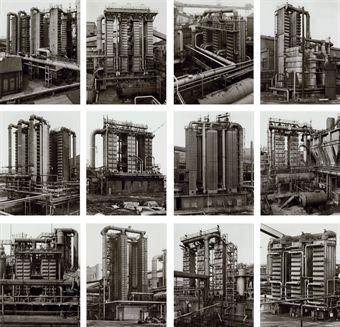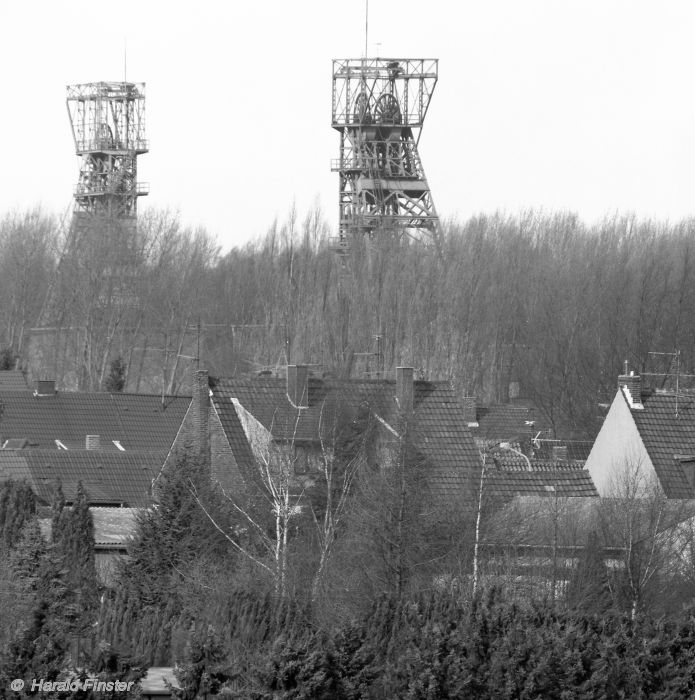The above powerpoint presentation is just a brief introduction we were asked to produce individually as an insight into what I am hoping to present as a final entry for my specialist location brief.We were asked to keep it short and just present it in class as not only evidence that we had some sort of idea of a plan, but also as a means of supporting each other by way of bouncing ideas off each other and inputting any ideas we thought may be of help to each other . The following entries represent a more in depth expansion of the powerpoint and a breakdown of the thought process that will go into achieving my final submission, The Last Bastions Of British Industry.
The Title:
I came to the conclusion a while back that it easier to work within the perimeters of your assignment if you not only make notes on what you are looking to achieve but even more so if you can give your project a title that gives you some sort of focus so you can decide as you go along, what is and isn't suitable for inclusion. Now I hadn't initially decided on a subject matter for my specialist location as I just tend to allow ideas to bounce around inside my head alongside all the other nonsense that's in there and it wasn't until I was driving south along Guiness Road in Trafford Park that I was captivated by the way the sun was bouncing off an industrial plant behind the Harp Trading Estate , that I realised I may just have come up with an idea and decided to turn the car around and take a few test shots to work with when I got home.
I'll explain a little more about my thoughts on how I am going to approach this project in the following section on location but for now I'll cut to the chase about the title which came to me after the realisation that these assembelegies of industry that protude into the skyline were somehow reminding me of the work of Donovan Wylie and his work from his Outposts collection and so some how they were going to be representative of The Last Bastions Of British Industry .......ok, so they may not all be owned by British based companies but at least they have been built on British soil and help to keep this country off it's knees.
Location:
For my locations I originally considered keeping it with in the boundaries of Trafford Park but then the more I think about it isn't simply going to be a representation of Trafford Park and it's industries, it's also about the way these 'bastions' can be viewed as my interpretation of the Outposts in Donovan's work and so with that in mind I shall be concentrating more on the visual aspect of the stuctures than where they are located but in saying that there are a few important factors I need to consider when choosing my subjects.
1/ Accessibility - An important choice as I'm not looking to break any laws of trespass so my vantage point should be one that enables me to take time over the composition of my shot whilst at the same time be good enough to guarantee a good final image that is free from any distracting features such as motor vehicles , people and even trees and shrubbery as I'm looking for clean industrial landscapes.
2/ Health & Safety - As these shots are going to be of an exterior nature then the most important thing to consider from a health and safety point of view is that I am aware of my surroundings and by this I mean that if I am shooting from a roadside location I will have to make sure that I don't become an obstruction to any pedestrians and also that I am not likely to step back into the road at any given time to achieve a better composition. Another important thing to consider when working outside is the whereabouts of my equipment bag at all times, even more so if working from a tripod as I am more inclined to place things on the ground than keep them on my person . Now this isn't just about losing or tripping over things, it's also about being aware of thieves and not just on foot, I'm talking about passing cars that may see my distraction as a moment of opportunity.
3/ Equipment - I'm presently still undecided on the width of my landscapes and so for this reason I shall be taking both my Sigma 24-70mm f2.8 so I have the option of a wider field of view and also by Canon 70-200mm f2.8 in case I find myself limited on how close I can get to my subject. I will also be taking my tripod as I am still considering the idea of long exposures but this is dependent on the weather conditions and clouds as I'll explain in my objectives section to follow, plus a selection of filters such as ND8 and ND10 to be used to create motion blur if I decide to go down that route and then also a polarizer should I decide to go down another and just make the clouds pop .
4/ Objectives - I am looking to create a series of images that work well as a set not only for the purposes of this brief but also with a view to them being good enough to exhibit and with this in mind they will all be presented in mounts, if everything goes according to plan, and then frames , if I have some sort of windfall. I am looking to achieve clarity throughout the structures but at the same time I am looking to catch them in bright sunlight so any metallic features really stand out against the sky which I am hoping will be blessed with a scattering of Cumulus clouds. The reason I am hoping for the clouds is that I am looking into motion blur as an option to add a little extra drama to my landscapes and so my two choices of implementing this plan involve either shooting a long exposure probably using the ND10 for maximum movement or, and this would be a lot more time consuming in pp work, using layers in photoshop and adding it in there but depending on the intricacy of the subject, it would take a keen eye and a steady hand to ensure I didn't miss any bits between gantries etc.
Donovan Wylie
Donovan's exhibition and accompanying book, Outposts:Kandahar Province, was a study of the solitary military outposts that were built in Afghanistan by Canadian and American troops between 2006 and 2011 to act as points of refuge and reconnaissance for the troops patrolling in those areas. They were often situated in high up in isolated areas so that they could command a view of the troops patrolling the vast spaces immediately below them but were in turn crudely built structures that where built for the purpose and aren't destined to stand the test of time. It was with these in mind that I first came to realise that a lot of the chemical plants and the like, within my local industrial areas, had some form of resemblance to both his Outposts and British Watchtowers
Bernd and Hilla Becher
I have previously mentioned the works of Bernd and Hilla Becher in an entry I wrote on Topology, but I think both they and the Dusseldorf School have been influential in my choice of subject matter for my specialist location. They presented single structures within the constraints of a square frame with very little background distractions and so the emphasis was on the industrial structures but in such a way that the viewer was drawn to pick out not only the similarities but also the differences between their construction.

Harald Finster
Harald Finster is a German photographer and also a member of the International Industrial Photographers Association. He first came to my attention when I stumbled across his a few of his images which I at first thought where a lot older than they were but as it turns out he has a genuine interest in how the industrial world is a rapidly changing landscape and so he wanted to capture images of these sites before they disappeared for ever and does so in such a wonderful way with the use of both medium and large format cameras.

The more you look at his work that not only includes his homeland, but also other European countries including the UK, then the more you can see how a lot of his images could be seen to be influenced by the works of Bernd and Hilla Becher, and if further proof is required then I'd suggest you take a look over at his website to see further examples of his wonderful series.
Robert Yarnell Richie
The first thing that caught my eye about some of Richie's images, was the way the sunlight enhanced the magnificence of the metal work within the structure of his subject matter. Richie was born in 1908 and went on to work as an industrial and commercial photographer within some of Americas largest industries including aviation, chemical and automobile and to me produced a body of work that managed to capture the power and majesty of what he was shooting in what I'd consider to be icon images of the era.
Further images can be seen over at the SMU Central University Libraries including many arial and landscape shots, but it was the texture and the metallic sheen that he used to capture that first caught my eye.
Ed Ruscha
Now then, although Edward Ruscha was primarily an artist and cartoonist often connected with the pop art movement which included others such as Andy Warhol, he was also well known for some of his photographic work and the one that is influencing me most is his series first published in book form in 1963, Twentysix Gasoline Stations . The series of images contained, are quite simply what it says on the cover, 26 photographs of 26 different gasoline stations between Oklahoma and LA on Route 66 which was his way of documenting the landscape on the journey that he would often take. Once again I feel it's just the main focal point of of the image that is predominant with in the frame and that#'s something I'm looking to be able to replicate.

Dann and Lewis
My final point of reference comes from an article I read on a collection of images taken by a Reading's first female professional photographer. Now I can't tell you great deal about photographers in the title except that I was intrigued by the fact that back in the day they wanted to document Reading's skyline by producing a series of images, 12 in total, though one's still missing, taken from the top of a water tower on what is believed to have been 12 glass plate negatives. The tower has long since gone but what does exist is what they captured that day and how it made available to the viewer the way certain buildings towered above the others in the surrounding vicinity, and although the majority would have been churches and the water tower previously mentioned, it goes someway to explain what I'm looking to achieve with my images but from a much more sensible viewpoint.
